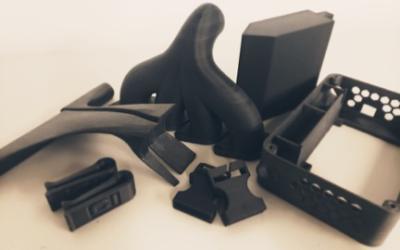
Cincinnati Inc. has released a new carbon fiber resin material for its SAAM (Small Area Additive Manufacturing) 3D printing system. The new material is impact resistant, lightweight and has a very high strength-to-weight ratio. Carbon fiber reinforcement makes the material stiff, durable and very low warping – and advanced inter-layer adhesion results in accurate, quality parts with good dimensions. The material’s superior surface finish makes it perfect for custom tooling applications, as well as assembly, CMM, welding and CNC fixtures.
“This material advances the additive applications on the shop floor, allowing on-the-spot production of custom tooling and fixturing which saves time and money,” said Chris Haid, general manager of the NVBOTS business unit at CI. “Additive Manufacturing has opened a new world for parts designers and engineers, and now SAAM allows manufacturers to fabricate custom tools and fixtures easily and quickly. This material is very durable and it has been tested, qualified and certified by CI to be compatible with SAAM. It’s another example of how additive is shaping the future of manufacturing.”
SAAM uses fused filament fabrication (FFF) technology to 3D-print composite or plastic parts directly from a CAD design. The system allows designers to prove-out part designs while saving material and time. SAAM also simulates parts produced by nonadditive machines. The same CAD file used for the prototype can be sent to a laser, a press brake, or a shear for metal fabrication. It dramatically reduces waste in the design process and accelerates advancement to production phase.
Contact Details
Related Glossary Terms
- computer numerical control ( CNC)
computer numerical control ( CNC)
Microprocessor-based controller dedicated to a machine tool that permits the creation or modification of parts. Programmed numerical control activates the machine’s servos and spindle drives and controls the various machining operations. See DNC, direct numerical control; NC, numerical control.
- computer-aided design ( CAD)
computer-aided design ( CAD)
Product-design functions performed with the help of computers and special software.
- shaping
shaping
Using a shaper primarily to produce flat surfaces in horizontal, vertical or angular planes. It can also include the machining of curved surfaces, helixes, serrations and special work involving odd and irregular shapes. Often used for prototype or short-run manufacturing to eliminate the need for expensive special tooling or processes.
